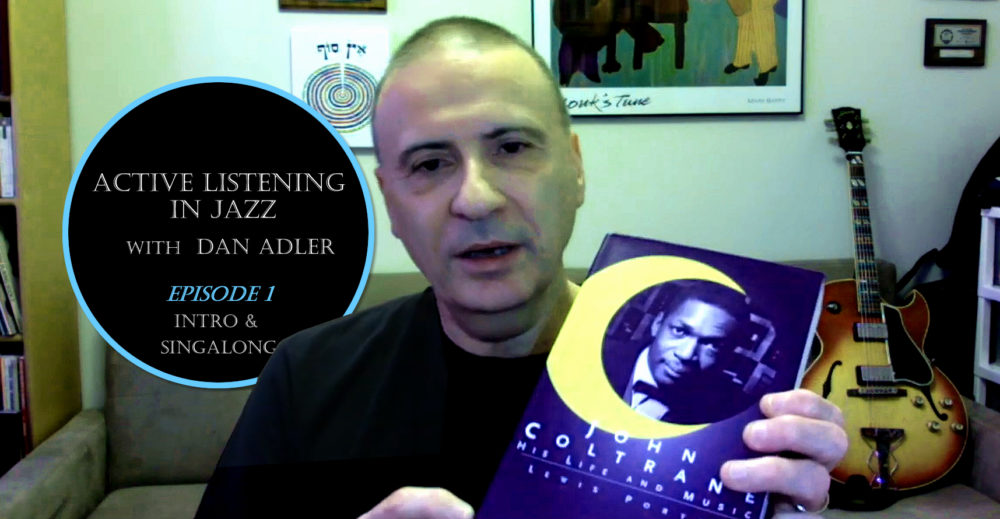Hi everyone my name is Dan Adler and I’d like to welcome you to my new series about ‘Active Listening in Jazz‘. Now what is Active Listening in Jazz ? That’s what we’ll try to go over here.
If you think that Jazz is sort of cool music to have in the background, chill, anything that is sort of a good relaxation type music. Music to drink your glass of wine with, or romantic music ~ that’s all cool. But I want to tell you there is another whole way of listening to Jazz.
If you’ve ever been at a Jazz club and have not known what you’re supposed to be listening for, that is what this series is supposed to be about. Now it’s not for musicians.
Musicians, specially Jazz musicians spend their whole life trying to figure out this music. What is the history? What is the theory? How did they get it out there? How to express yourself, all these things.
But for some reason there isn’t that much information out there about ‘active listening in Jazz’. And what I mean by that is there are millions of books out there, either books for non musicians about Jazz, you can get online series.
You can learn the history of Jazz, you can even watch the Ken Burns series about Jazz. And through all of that you get a lot of different aspects of Jazz.
But for some reason no one has yet made a series that is very specific that tries to answer the question ‘if you are now in a Jazz club or listening to Jazz albums for the first time ~ what should you be listening for?‘ What are you supposed to be following? What are those people doing?
And I get that a lot. I live in New York city so I help my friends get to Jazz clubs as much as possible. People who are visiting and I often see that after a little while they start to wander. They check their phones. You know you’ve all seen that.
Or they think that Jazz clubs are made for background conversations. And they were kind of surprised by the people who were sitting there and actually following along and are into it.
Also people have not yet really gotten the information about what is the intellectual process that is involved in Jazz? And what I mean by that is the Jazz musicians that are on stage or playing to you from a recording are going through an intellectual process that in many ways is unique.
It is unique to that moment, unique to their capabilities and it’s unique to the conversation that that is going on between them. And it also unique to the challenge that they set up for themselves. And that challenge is not something that is always understood.
The intellectual process, the abstraction process. I talk to a lot of people who are in areas of abstraction like programming or mathematics, physics or even anyone who has a scientific background ~ some kind of endeavour where they appreciate dealing with challenges.
But the challenges of Jazz have not been well explained I feel. What are the people who are on stage dealing with? And how do you put that in terms that are not only meaningful to musicians? So before I get started with this I want to tell you a couple of words about myself.
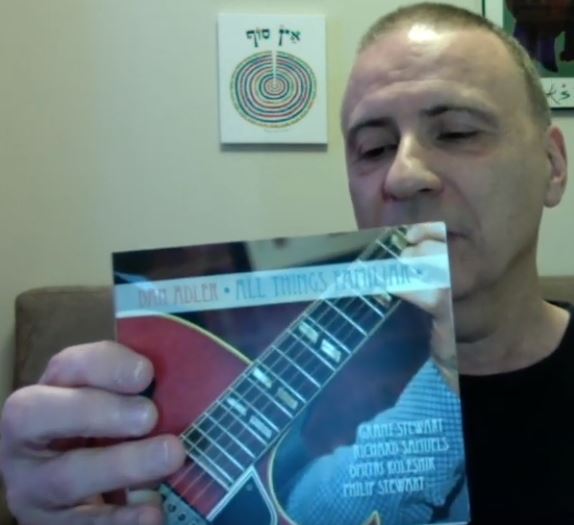
My name is Dan Adler. I play guitar. I try to play Jazz. I’ve been playing for many years. I’ve recorded a few albums.
I’ve recorded an album with Grant Stewart, Phil Stewart, Dmitri Kolesnik, Richard Samuels. That was my first album ‘All Things Familiar‘.

I recorded an album with Joey DeFrancesco and Byron Landham called ‘Back To The Bridge‘.

And my recent one is called ‘Friends On The Moon‘ and that’s with Arnon Palty who helped write half of the music and Donald Vega the great pianist and Byron Landham the great drummer.
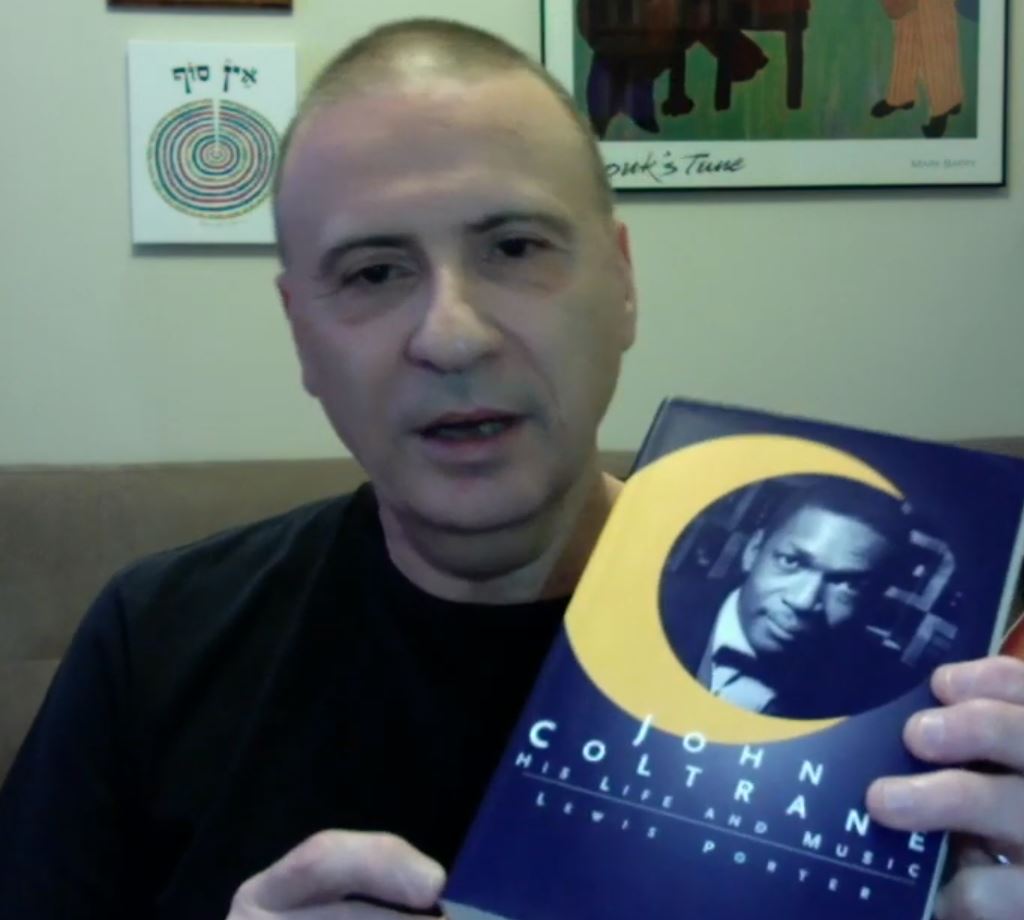
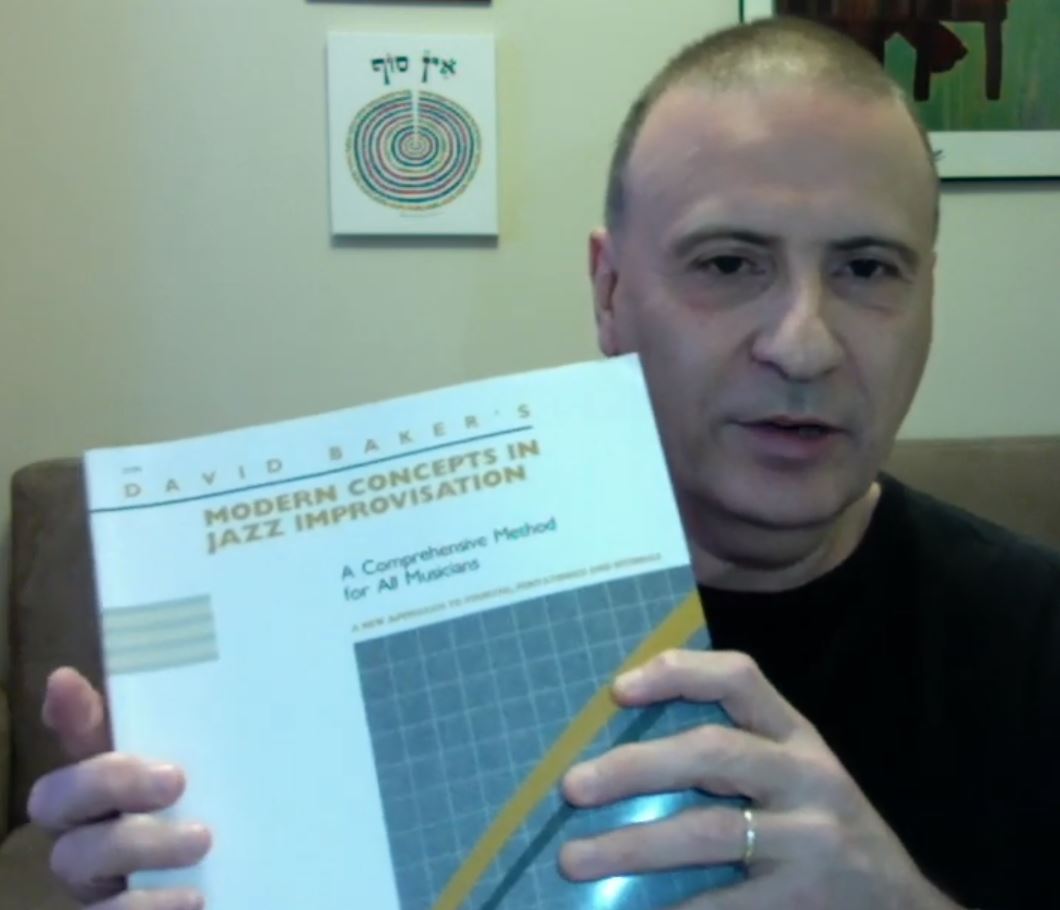
And so that’s my musical side. And I also have another side besides reading up on Coltrane
… or David Baker, a great book about Jazz Improvisation,

… Jerry Coker, another great book about Jazz Improvisation

… Miles Davis, of course The Music of Miles Davis is legendary
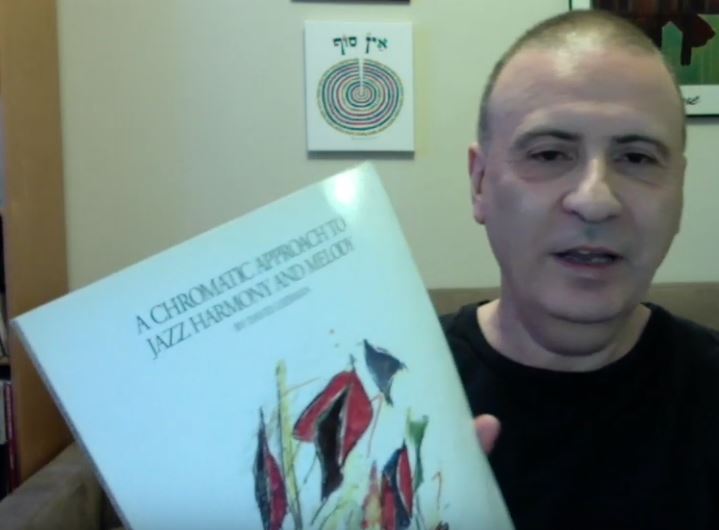
… David Leibman, A Chromatic Approach to Jazz Harmony and Melody
We have a million books that are made for musicians and talk about Jazz in all its complicated details.
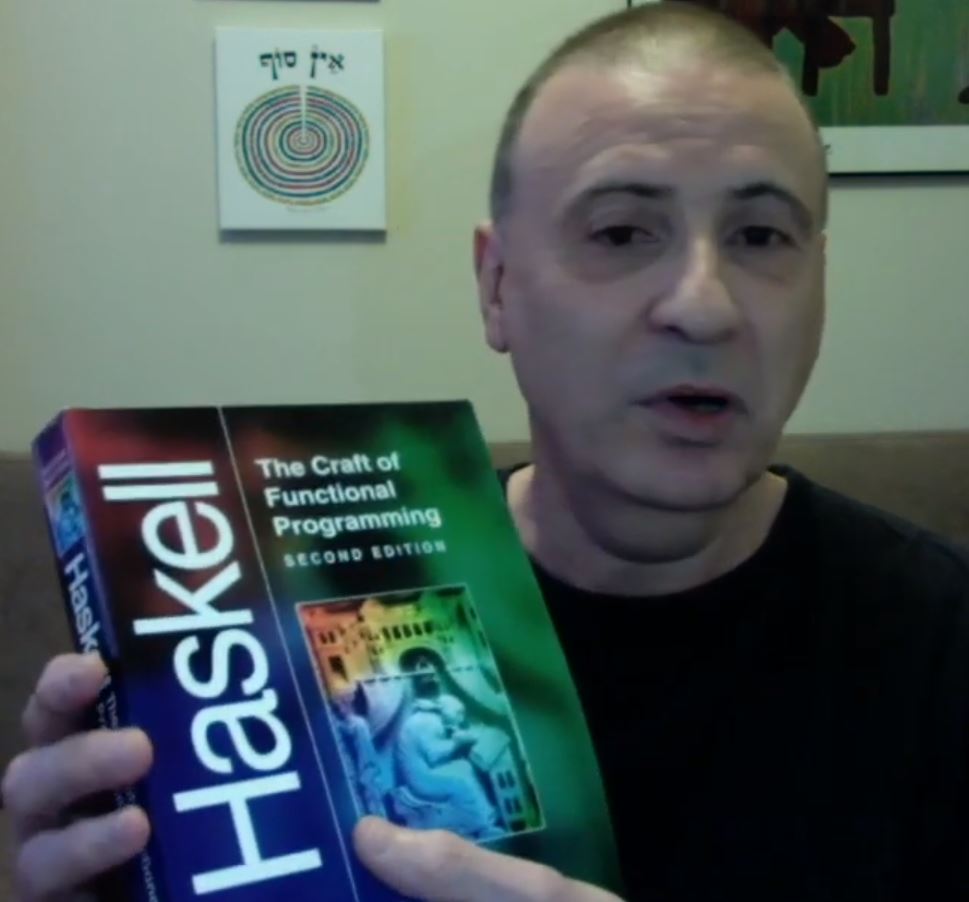
But I’m also interested in programming so together with those books you might find me reading about Functional Programming …

… books about Machine Learning, and TensorFlow …
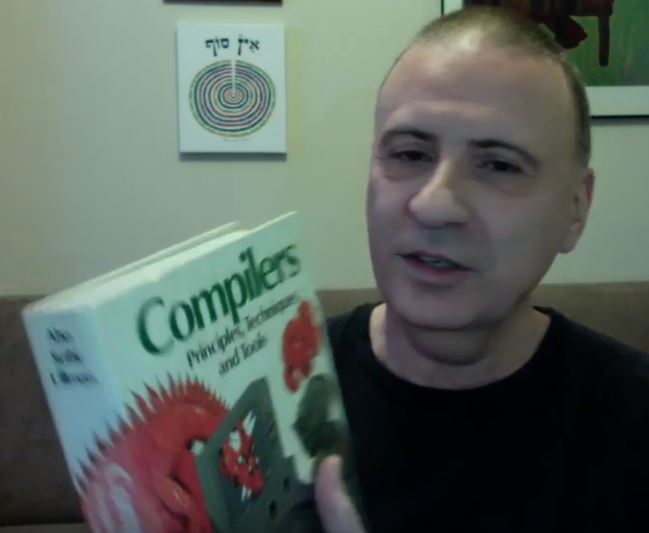
… books about Compilers, all sorts of stuff in that area.
So the computer scientist in me wants to find the rules and the processes that go on behind Jazz music, the creation of Jazz music and somehow be able to phrase it in ways that meaningful to people.
Now some people say ‘the proof is in the pudding’. All you really need to know is to listen to the final result and that’s all you need to know. And you hear that a lot from musicians and I think that’s helpful and in the end that’s obviously the real test.
But what happens I think is in this culture right now, people are very interested, I mean look at cooking shows. How many cooking shows are there. People are interested in how you get to a result ~ are interested in what is the process that a chef is going through to reach that final result which is tasty to them.
They don’t want to go to culinary school but they want to understand the process. You see that with a lot more areas right now. People are interested in what is the process that the person is going through.
Now I may not be the most qualified to give this information. I’m a Jazz musician but I’m not one of the greatest Jazz musicians. I’m certainly not in the first tier, but what I’m seeing is that there is a missing link.
There is a missing amount of information out there about what is going on on stage during a Jazz concert or in a club or when you’re listening to something.
What is going on? what are the people dealing with? what is it that they are trying to convey to you and are you getting it?
Now when you watch movies about Jazz musicians ~ movies about Charlie Parker ‘Bird‘, movies about Chet Baker, Bill Evans, all that they’ll talk about the creative process and then there will be a lot about drugs.
And then there is a whole story around the experience of African Americans in the United States. And all of those things come together to give you some feeling of something that you need to know historically, but is not an intellectual process.
Somehow in all of these films, in all of these documentaries, in all of these books what you get is you understand that there is a creative process going on and you understand that there is something super special about these people. But they are not talking about the type of geniuses that these people are and what it is exactly that they are trying to do.
And when you don’t understand that you kind of look at it and say ‘it’s a bunch of drug addicts that are doing something creative. I don’t know what they are doing. I understand the history how it evolves. I understand maybe the styles but I’m just not interested because I can not penetrate what it is that they are doing’.
What is the intellectual process going on?
So I want to help you try to do that and actually if more qualified or other people in the Jazz educational areas will come out with even better videos on these areas that’s really my goal. My goal is for more people to talk about this: What is the intellectual process going on ? How can I explain it to you in such as way that you will actually enjoy listening to Jazz the next time you go to a club?
Jazz music in New York is one of my favourite activities and when I go around I see a lot of people who are engaged and I see a lot of people who are in the club but who are not engaged with what’s going on. And part of our responsibility as musicians and people who really care about this genre is to explain what it is they should be caring about.
So that’s what I’m trying to do here and I am going to try and also interview some of the great musicians that are around and ask them these questions. What do you think people should be listening to? and I want to make as specific as possible.
So in this series we’ll go through the roles of each instrument. We’ll go through the things you should be aware of when you’re listening to Jazz. We’ll go through some of the definitions of some of the types of rhythmic devices that people are using to try to understand what it is exactly they are trying to do.
We’ll even try to understand the whole idea of building melodies on chord changes without getting too much into the technicalities of it all. The goal is not to make you into a Jazz musician but just to give you enough information to able to enjoy the music at a higher level.
So the first thing I will try to do is to give you an example that is very concrete as something I’ve seen Chick Corea and other musicians do many times. And this is the singalong.
So the reason I really like the sing along is that what it does is demonstrate what Chick Corea is trying to do, I’m assuming is to show the audience how they should be already listening. And probably how most people who are active listeners are listening.
So what he does there is he give the audience a phrase and they sing it back. And if you know anything about the way Jazz musicians actually train themselves, ear training and transcribing is exactly this process of listening to what somebody is doing usually. Someone who is a famous Jazz player. Listening to what they are doing, trying to mimic it and to try to understand how the phrase works. And then trying to use it in some other context.
And so when you listen to the singalong you see how he is kind of training them in a way to listen and to be able to repeat. It also shows that I think musicians and non-musicians alike have this ability. You learn songs all the time. You hear things, you repeat them. And this idea of following along in your mind is the key thing that is demonstrated in this singalong.
And also the way that complexity evolves so starting simple, relating to melodies all of this things we’ll talk about in further episodes. But the main thing I think to notice here is a capability that most people probably you currently already have. And this is a very important key, trying to follow along what the musician is doing, what the soloist is doing.
That’s the first part. Later on you’ll learn to hear about the other parts that are going on at the same time. But what is the soloist doing and could I repeat that? Is he going to do something that is going to surprise me.
So what you see him do is take a phrase and then he’ll change it a little bit. And some kind of surprising element will come in. And then you’ll be thinking about it in a slightly different way.
And then he’ll take it and make it a little too complicated for you to sing, but at that point you can see how the instrument kind of transcends the voice and the abilities to create melodies that you can’t always sing.

So let’s listen to the Chick Corea singalong and I’ll see you after that.
… and it gets more complicated as he goes along. He’s starting them simple ‘la, la la, laa’ … you can do it too.
The phrases are very simple and its one phrase at a time but he’s going over the form of the song ‘Spain’.
Alright the phrases are getting longer and the audience is following. Now he’s messing with them. This is part of the humour in it but he’s not giving up. Back to simple ~ a little surprise, the phrase goes down, then it goes up.
Now he’s back to the melody which the audience knows. Alright ! And that’s how he gets his audience to sing along.
Ok so that’s been our first episode of Active Listening in Jazz and in the next episode we’ll talk about counting, form and how to listen what is going on over all in the music.
So thank you and I hope to see you again soon.
~ ~ ~ ~ ~ ~ ~ ~ ~ ~ ~ ~ ~ ~ ~
Check out my Active Listening in Jazz for Non-Musicians Facebook Group. Join today to find out more.
See my Active Listening in Jazz for Non-Musicians Youtube Playlist with the first three episodes already recorded.
Subscribe to the playlist to learn about new episodes.
Episode 1) Intro & Singlalong Dan Adler blog series
Episode 2) The Blues
Episode 3) Form
Episode 4) Miles Davis, ‘So What?’
Episode 5) Harmony & Improv
Episode 6) Jazz Expression
Episode 7) Rhythm Section
Episode 8) Story and Motif
